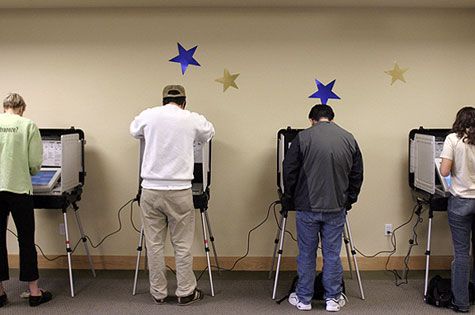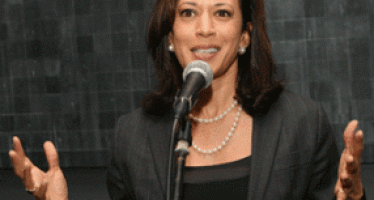Pols resist mail-only voting

Jan. 19, 2010
By JT LONG
In the absence of legislation allowing local jurisdictions the power to decide how to most efficiently conduct elections, counties pay the high price of democracy.
Although California’s neighbors to the north have tested the vote-by-mail-only waters and found the practice to increase voter participation and satisfaction while decreasing costs by as much as 30 percent, the latest bill designed to run a pilot program in Yolo and Santa Clara counties for small replacement elections was vetoed. AB 1228 by Assemblymember Mariko Yamada, D-Vacaville, a former Yolo County supervisor, would have helped to determine whether the results found in Oregon and Washington would play out in the Golden State.
“The bill was driven by financial considerations,” said Arturo Salaices, Yamada’s legislative aid. “We were looking for ways to save money in a difficult budget year.” The measure made it through the Legislature only to be vetoed by Governor Arnold Schwarzenegger with a note that said he didn’t want to make it more difficult for the poor and disabled to exercise their right to vote.
Even measures like Assembly member Bill Monning’s, D-Santa Cruz, AB 624 that would have allowed counties to remove permanent absentee ballot voters from the calculations of how many polling places are needed have been stymied.
Meanwhile, voters are letting their preferences be known. Since the California Legislature allowed voters to sign up for permanent absentee voter status in 2002, the number of absentee voters statewide using permanent absentee ballots has increased from 26 percent to 62.19 percent in 2009, according to statistics from the Secretary of State’s office.
While the demographics of permanent vote-by-mail status skew older and white, returns in all-mail voting elections in Oregon and Washington have tended to mirror the overall political makeup of the area.
“Elected officials don’t support the change because the system in place is the one that got them there,” said Fred Smoller, director of the Masters in Public Administration Program at Brandman University in Irvine, California.
Objections raised include concerns about fraud and electioneering on one side and accessibility for those who don’t have permanent addresses or special needs on the other.
Smoller countered that mailed ballots are more secure since automatic signature verification machines remove human error and improve voter secrecy requirements. He pointed to neighborhood voting centers as a way to continue to offer assistance for those who choose to vote at the poll while voting from home increased convenience for those with disabilities.
As the debate rages on, counties are left paying the bill for an over-taxed system.
The absence of flexibility in conducting elections leaves the five counties that would be impacted by the need for a special election to replace Senator Abel Maldonado-R, San Luis Obispo, if he is confirmed as lieutenant governor, with bills for hundreds of thousands of dollars. All for an election that election officials predict will result in voter turnout in the mid-teens.
“We are running two parallel election systems and it is very expensive,” said Gail Pellerin, county clerk for the city of Santa Cruz and vice president of the California Association of Clerks and Election Officials. She would have to find as much as $200,000 from an already stressed budget to survey voters in the part of Maldonado’s district that touches her zip codes. That means she has to send ballots to the one-third of her voters who are registered permanent absentee and staff one Americans With Disabilities Act-compliant polling place for every 1,000 voters regardless of absentee status at a cost of about $3 per voter.
Although printing and mailing absentee ballots is considered a reimbursable state mandate, counties have to front the money and then wait years to be repaid. Pellerin recently received reimbursement for some 1990 costs. “How do I pay for ballots when I don’t have any money?” Pellerin asked.
That reimbursable status might disappear if counties are given the option to hold vote-by-mail-only elections. Then counties would foot the entire bill, but taxpayers would be on the line for a smaller overall pricetag.
Pellerin compares mounting election requirements to a house of cards where the Legislature continues to pile requirements on top of local clerks at a time when county budgets and staffs are shrinking. “We know what works best for our counties and we need legislative support to make those decisions,” Pellerin said.
The California Association of Clerks and Elections Officials created a Best Practices Position Paper that advises that when and if a vote-by-mail system is adopted, counties should focus resources to gain efficiencies while limiting the dependency on human interaction and ballot handling. Other suggestions include hosting regional voting centers with multiple accessible voting machines, mail ballot drop boxes and real-time connections with the voter registration database.
L.A. Looks North
Assemblymember Yamada is not the only one considering vote-by-mail as a way to save money. In 2007, the Los Angeles City Council directed staff to study the pros and cons of a vote-by-mail system. The city faced questions about the reliability of manual, hole punch and electronic voting systems, low voter turnout and rising election costs and wanted to know if the U.S. Postal Service could play a role in simplifying the democratic process.
Los Angeles is home to 2 million registered voters in more than 2,000 voting precincts. Election Day requires 8,000 poll workers and $17 million. Even a special election to fill an empty council seat rang up a bill for $2 million. Budget issues aside, finding and training qualified workers and accessible-compliant voting locations has proved to be a challenge in many areas.
Despite the expense, voter turnout has been shrinking for non-general election events. The study showed that an average of 30 percent of eligible voters turn out for mayoral elections, and 15 percent for non-citywide municipal elections.
The city’s vote-by-mail constituents showed the highest turnout rate of 41.6 percent. “If the city turns to conducting all-vote-by-mail elections for municipal elections or for non-Citywide Special Elections, voter turnout may indeed increase,” the study stated.
However, the study authors tempered this finding with a cautionary note: “Administering such elections raises some administrative challenges.”
In order to mitigate concerns about accessibility and uneven mail service to a mobile population, the study recommended combining mailed ballots with as many as 100 neighborhood voting centers for a citywide election where handicap-accessible machines and interpreters could be utilized for up to two weeks before the election. Objections about transparency could be eased with a mail tracking system.
This allows voters to select their preferred method of voting, receive their ballot in their language, have time to make informed choices and get help from a trained volunteer. It also allows election officials to verify signatures, delete outdated registrations based on undeliverable mailings and spread out ballot processing time with fewer volunteers.
The study found that in a general election the costs of making all ballot types available in all languages at all neighborhood voting centers or a new electronic voting system that allows printing-on-demand of ballots combined with increased staffing to process the returns from a potential 2 million voters by the legislated deadline and extensive voter outreach could be more expensive than the current system.
For a special election however, the hybrid system utilizing vote-by-mail with neighborhood voting centers would realize “significant savings,” according to the report. The report estimated that a special election for 123,750 voters in Council District 2 that ran up a $2 million bill in 2009 would run about $1.1 million.
The conclusion? “With the continuing difficulty in recruiting poll workers and polling places, the increasing complexity of polling place operations and the concerns regarding voter turnout, the City should consider the possibility of transitioning to [vote-by-mail]-centered municipal elections.”
Los Angeles City Council will have to act quickly on the November 2009 report if they want to put the charter change issue before voters in June as the deadline to file a ballot measure is mid-February.
A similar study by the Orange County Registrar of Voters Vote by Mail Program Report to the Board of Supervisors estimated a $200,000 per election savings.
The Northwest Experiment
Both the Los Angeles and Orange County studies looked at the experience of California’s northern neighbors. Since 1998, Oregon has held vote-by-mail only elections. Oregon started with a permanent mail option and once a majority of voters made the individual choice to vote by mail, they put all-mail elections on the ballot. It passed by a margin of 70 percent to 30 percent. The Oregon Vote-by-Mail Commission has found “no indication or evidence of greater fraud or undue influence in vote-by-mail elections than in polling place elections.”
Washington followed by allowing counties to choose in 1997. The results of that initial test run showed increased voter participation, lower costs and a smooth voting experience, according to a report by the Washington State Association of County Auditors called “Mail Voting in the Stadium Election.” Comparisons of voting patterns in neighboring municipalities where one voted at the polls and one mailed it in found increased voter returns, but no change in the outcome of the election.
Today all but one Washington county operates vote-by-mail-only elections. Even in Pierce County, which still operates polling places, the vast majority of ballots are cast by mail.
Arizona and Colorado have tested the mail-only voting waters and found similar results.
Despite these positives, some in Washington state did not approve of the change to mail-in ballots. Spokesman-Review editor Doug Floyd in his editorial “Mail-In Ballot Stamps Out Civics,” wrote “The most significant harm done by all-mail elections is the effect they have on social connectedness. Encouraging voter participation by making it effortless ends up discouraging citizen involvement.”
Brandman’s Smoller called the shift to mail only elections inevitable. “The question is why not start saving the money now?”
Related Articles
What Hath Arnold Wrought?
AUGUST 26, 2010 We’re at that time in a governor’s term when we start hearing the word “legacy” on a
Union hack seeks OC supe seat
Steven Greenhut: Former Assemblyman Todd Spitzer, who recently got fired from his job at the OC district attorney’s office for
Statewide seats surprisingly close
Aside from Gov. Jerry Brown’s victory, 58 to 42, which I wrote about earlier, the other statewide races are surprisingly close in



